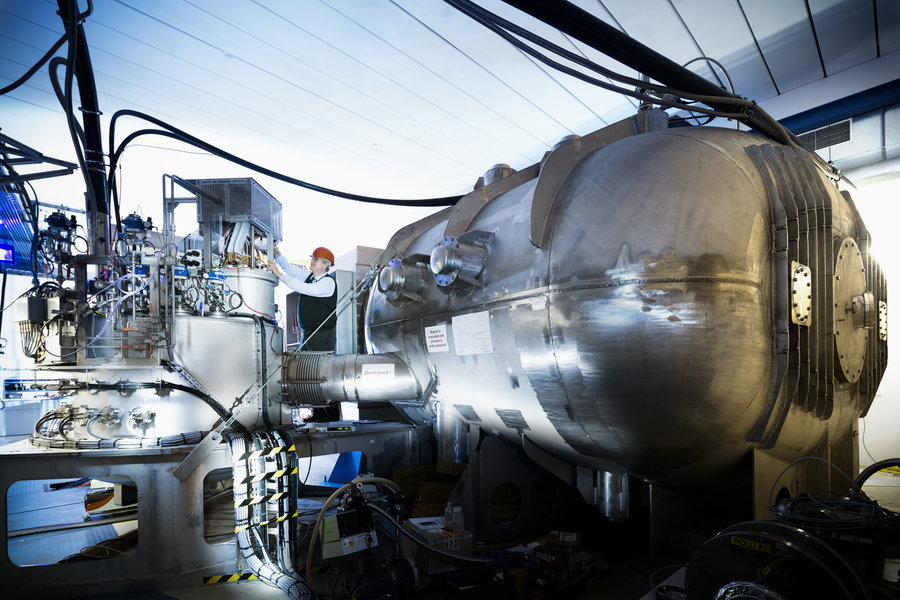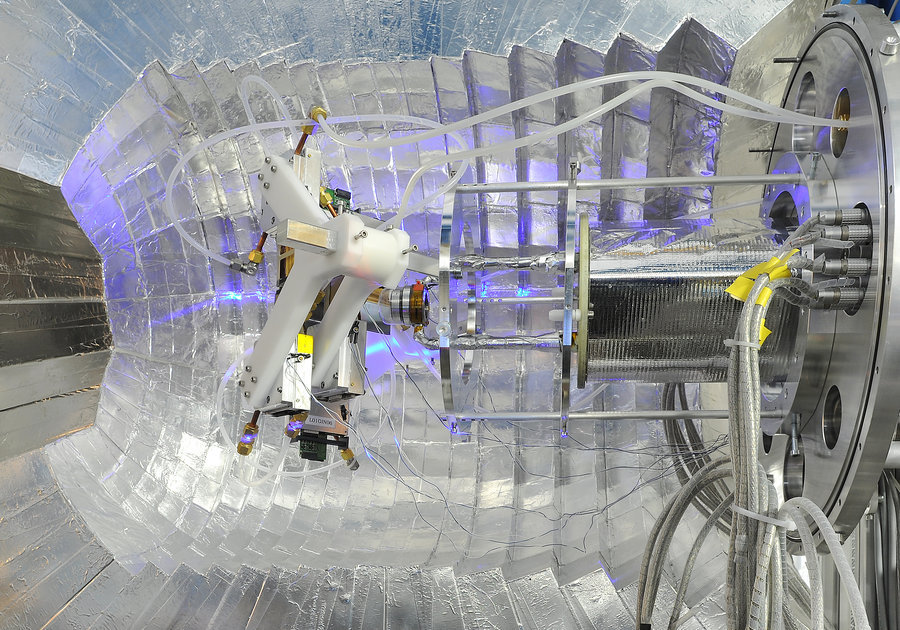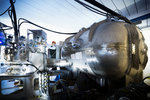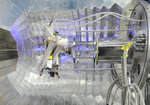GLAD and COCOTIER: Two French FAIR contributions to R3B experiment in operation
09.09.2021 |
This text is based on a news release by the Institute of Research into the Fundamental Laws of the Universe (IRFU).
Two state-of-the-art instruments, GLAD and COCOTIER, were designed and built at the Institute of Research into the Fundamental Laws of the Universe (Institut de recherche sur les lois fondamentales de l’Univers, IRFU) in Saclay, France, recently and are now operational in the R3B experimental site of GSI. In the future, both will be used at FAIR, the international accelerator facility currently under construction at GSI.
GLAD is a large acceptance spectrometer for the analysis of relativistic radioactive heavy ion beam reactions. It was installed on site in 2015 and saw beam for the first time in fall of 2018. In some experiments, these beams will interact upstream with the COCOTIER liquid hydrogen target. The latter has just been used for the first time in the FAIR Phase 0 experiments in March 2021. These two pieces of equipment are key elements for measuring the properties of nuclei at the limit of nuclear stability and allow current nuclear models to evolve towards more predictive ones.
GLAD: a large acceptance dipole for GSI/FAIR
Following the successful testing of the cold mass (screen, vacuum chamber) of the GLAD magnet, (22 tons at 4.5 Kelvin) at Saclay in a cryogenic test station of IRFU, GLAD had been installed in its cryostat and transported to GSI, where it was installed in the experimental halls. It was positioned, as well as connected to its power supply and to its cooling system by GSI teams. Following a beam test in the fall of 2018, GLAD was successfully used in the 2019, 2020 and also the 2021 R3B FAIR Phase 0 campaigns, where for the first time the COCOTIER target was employed.
COCOTIER: a liquid hydrogen target
The COCOTIER (COrrélations à COurte porTée et spin IsotopiquE à R3B – for short-range Correlations and Isotopic spin at R3B) liquid hydrogen target is designed to perform quasi-free scattering experiments where the nucleus to be studied, in the form of a beam, impacts on a target of protons that will selectively eject a proton or a neutron from the nucleus in question. To compensate for the low intensity of the exotic beams, dense (hence the need to liquefy hydrogen) and very thick (up to 15 centimeters) proton targets are used. It is therefore necessary to reconstruct the position of the reaction vertex inside the target using a tracking detector. This information is necessary to perform the spectroscopy of the studied nuclei in order to correct the trajectories and the energy loss of the measured particles.
To liquefy hydrogen at pressures close to atmospheric pressure, it must be cooled to cryogenic temperatures (21 Kelvin). The hydrogen is liquefied in a condenser cooled by a cryocooler and flows into the target cell due to gravity. Turbomolecular pumping allows to obtain a high vacuum (10-6 millibar in the cryostat and in the target chamber) in order to limit the convective flows. The integration into the constrained R3B setup posed many challenges. The target is placed in the middle of the CALIFA calorimeter, far from the vertical of the cryostat.
The target cell is wrapped in several five micrometers thick multi-layer insulation sheets in order to reduce the radiation heat flux, especially from the tracking detectors placed at 25 millimeters in the same reaction chamber and which allow to reconstruct the position of the reaction vertex inside the target. Three target lengths of 15 millimeters, 50 millimeters and 150 millimeters were produced to meet the requirements of the experiments approved by the GSI experiment committee.
The target system was funded by the French Research Agency as a so-called in-kind contribution with the aim of pursuing the study of short-range correlations in exotic nuclei. It was designed and built at IRFU and installed at the end of 2019 at GSI by IRFU teams.
Remote operation during the pandemic
The system is controlled by a supervision system, developed at IRFU, which centralizes the information coming from the programmable logic controller and the various controllers. The system allows connecting and remote piloting via a secured internet client. During the recent FAIR Phase 0 scientific experiments this allowed in particular to perform all filling and monitoring operations of the target remotely, which was necessary due to the absence of the IRFU team on site because of the pandemic. (CP)















